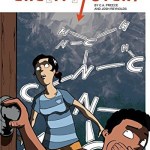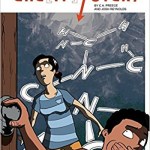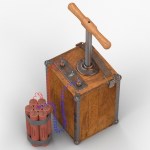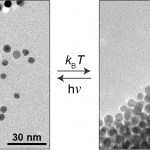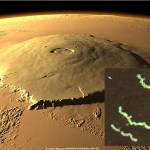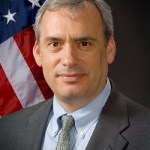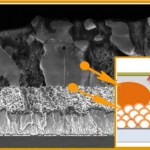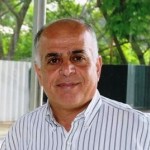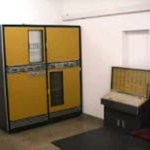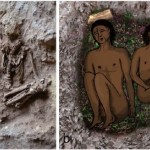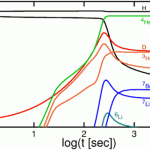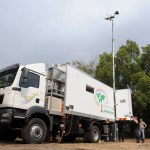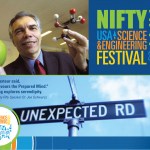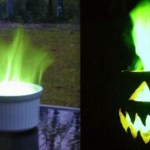Chemistry
CheMystery authored by C. Al Preece is a graphic superhero novel, drawn by Josh Reynolds, that teaches -- wait for it -- Chemistry!
A radiation accident transforms two youngsters into superheros, and simultaneously creates an evil villain for them to fight. The graphic novel covers that story and is indurated with frequent cleverly placed molecule size chemistry lessons.
Teachers need to know that this book complies with Next Gen science standards and is very classroom friendly. Indeed, author Preece is a chemistry and physical science teacher (and a trained chemist).
It is a great read, an…
Let's start with CheMystery.
This is a fun graphic novel mystery book by C.A. Preece and Josh Reynolds. Two cousins experience an incident that would make a physicist cry, but that works in a chemistry book because they now have the ability to observe and change matter. So this is a superhero book, designed to teach chemistry. The story is great, the science is great, and the pedagogy is well suited for kids and adults that like graphic novels.
Preece is the chem teacher (high school) and Reynolds is the artist.
This is written for grades 7 through 10 (ages 8-12) but some younger kids…
The fiery history of blowing shit up mostly accident but then discovering something good. Generally, good for blowing stuff up, but with purpose.
One day in the future, we may be treating our ailments with microbiotic combinations designed specifically to correct imbalances in our personal microbiomes. We’ll bring our prescriptions on rewritable paper and pay using shimmery optical chips embedded in our cell phone cases or maybe our jewelry. Or we’ll be waiting in our doctor’s office for a simple test of our microbiogenome to see if a light-based nanoparticle delivery treatment is working, while watching iridescent optical displays that change as we move...
These future scenarios (and many more) are all imaginary, but…
Speaking of sulfur: This common element turns out to be highly useful for understanding planetary processes – both on Earth and Mars. Two new papers by Dr. Itay Halevy use sulfur chemistry to understand the history of sulfur-loving microbes at the bottom of the ocean and the compounds spewed from Martian volcanoes that may have created brief Martian “springs.”
Sources of sulfur: Olympus Mons on Mars and sulfate-reducing bacteria that live in water on Earth (inset)
On the ocean beds, microorganisms “breathe” sulfur: They take in sulfate – an abundant compound of oxidized sulfur, and use it…
Once again, there are three new pieces online on our website, each wonderful in its own way. But Haiku just didn’t seem to fit this batch. So, with apologies to the scientists, here are three limericks on the newest Institute research. As before, follow the links to get to our website.
(Incidentally, there is some precedent for limerick writing at the Weizmann Institute. The late Prof. Amikam Aharoni, who also wrote some serious stuff on ferromagnetism, was known for his limericks.)
The Quasar
There once was a baby black hole
That went for a short little stroll
It zigged and it zagged…
Convective clouds forming over the Amazon in a blanket smoke. Image: Prof. Ilan Koren
Horse latitudes, doldrums, calms of Cancer and Capricorn: These are all synonymous names for the forsaken regions of the oceans that sailors of previous eras cursed because the winds that once pushed their sails die out there for weeks at a time. (One suggested explanation for the name “horse latitudes” is that some had to throw the horses overboard there when the supplies ran out.) On land, these subtropical belts – around 30-35° north and south of the equator – help form the world’s deserts.
These…
Guest Blog By Lek KadeliActing Assistant Administrator in the U.S. Environmental Protection Agency's (EPA) Office of Research and Development (ORD)
Each spring around the same time that so much of the country is swept up in the “madness” of amateur basketball tournaments, a dedicated team of employees at the U.S. Environmental Protection Agency are finishing up preparations to host student teams for another hard-fought college challenge: EPA’s P3 student design competition for sustainability.
While participants may not grab national headlines, the long-term benefits of their efforts have the…
Guest Blog By Festival X-STEM Speaker and Expo Performer Dr. Joe Schwarcz
“Hey, aren’t you somebody?” the teenager queried as I got into the elevator. While I was pondering an appropriate answer to this deeply philosophical question, his crony spilled the beans: "Yeah, he's that guy who talks about chemistry on TV." This was just the ammunition the philosopher needed. "Oh no, we're locked in an elevator with a scientist" he mocked, before volunteering the information that he got about 2% in chemistry in high school, and "that was with cheating."
Sadly, I've heard such comments before.…
Don't miss the opportunity to learn about the science of the paranormal from X-STEM Speaker Dr. Joe Schwarcz at the X-STEM Extreme STEM Symposium on April 24 ! Hear from this noted professor of chemistry from Canada's McGill University and how he uses his multi-faceted skills as a chemical scientist, magician, author, food expert and motivational speaker to inspire kids in science in fascinating ways! Learn how to register for the X-STEM Symposium by clicking this link.
He's known to his many students and fans simply as "Dr. Joe," but then Joe Schwarcz, professor of chemistry, has always kept…
Perovskite (say it: pə-ˈräv-ˌskīt, -ˈräf-). It may never become a household word, and the chemical formulas (eg., CH3NH3PbI3−xClx ) are as long as the name. But if you find yourself, in the not-so-distant future, adding new-and-improved solar panels to your roof, they may well contain a perovskite layer. If they do, it will be these “wonder materials” that will make your panels cheap enough to make your investment worthwhile and efficient enough to make you feel smug when you get your electricity bill.
You may ask: Aren’t solar panels dropping in price all the time? What is special…
“Billions of dollars are being spent on weapons of mass destruction. A small fraction of that could go so far to engage more Israeli and Arab scientists in collaborative projects in order to create a critical mass that will bring about peace.” The speaker is Dr. Zafra Lerman, President of the Malta Conferences Foundation, which organizes conferences in nonaligned Malta for Israeli, Palestinian and Middle Eastern scientists. These bi-annual conferences, attended by researchers from Egypt to Saudi Arabia, focus such neutral topics as materials science, as well as common interests like water and…
Guest Blog by Festival Nifty Fifty Speaker Joe Schwarcz PhD
According to Talmudic tradition, a wise rabbi once proclaimed that if a person planting a tree were told that the Messiah had arrived, he should finish planting before going to greet him. That of course was long before there was any awareness of the important role trees play in generating oxygen and soaking up carbon dioxide. Neither was there any knowledge about trees preventing soil erosion, absorbing air pollutants, preventing water runoff or controlling climate by moderating the effects of the sun, rain and wind.…
Here is a photo of one of the Golem computers on which Arieh Warshel and Michael Levitt -- this year's Nobel Prize in Chemistry winners, along with Martin Karplus -- did much of their original work.
Golem computer
My dad was a computer programmer at that time, so I have some idea of what their work must have entailed. To this science writer, that makes their feat nothing short of amazing.
The Golem, by the way, which is preserved in the basement of the Weizmann Institute's mathematics building, was not the first computer at the Institute. The WEIZAC (below) was built at the…
Last month we reported on the first people who, around twelve thousand years ago, were lining their loved ones’ graves with flowers. This month, we have a piece on the “extinct” frog that was “resurrected” and then discovered to be a living fossil.
Both of these studies were led by Israeli researchers from other institutions. The Weizmann contributions were what you might call technical: precise radiocarbon dating and x-ray micro-tomography. While the findings, themselves, were publicized in many scientific and popular publications, the technological advances that make these findings possible…
“We are not simply in the universe, we are part of it. We are born from it.” -Neil deGrasse Tyson
The story of the Universe is the story of us all; we all share the same cosmic history, coming from a hot, dense state some 13.8 billion years ago known as the Big Bang and emerging after billions of years of cosmic evolution to the Universe we know and love today.
Image credit: ESA and the Planck collaboration.
It's a beautiful story -- and one I've told before -- but it might seem, at least from our perspective, that something is missing from the astrophysicist's version of events. Yes, we…
Right above the tree tops -- where most people might think there is just air -- Prof. Dan Yakir sees a distinctive atmospheric layer in which all sorts of complex exchanges are taking place. CO2, of course, is one of the important ones, and we still don’t understand all of the ins and outs of its flux through the forest, soil and atmosphere. Moisture, heat (and by extension light) and oxygen all cycle through the interface between the forest canopy and the lower atmosphere, as do a number of volatile organic compounds (VOCs) released by many trees. These compounds may contribute to the…
“Talent hits the target no one else can hit; genius hits the target no one else can see.” -Arthur Schopenhauer
You've probably heard the story, by now, of Kiera Wilmot, the 16-year-old girl who performed a mildly dangerous chemistry experiment on school grounds, mixing together household cleaner and aluminum inside a sealed container. You can get the full story (excellently covered) via DNLee, but to give you the 15-second version, she was arrested, expelled, and is presently being charged with a felony that carries up to 5 years in prison. The school board is not backing down, the attorney…
Guest Blogger USA Science & Engineering Festival Nifty Fifty Speaker Joe Schwarcz PhD
I had my tonsils out in 1954. In those days a few bouts of tonsillitis, and out they came. I remember being plied with chloroform before the operation and with ice cream after. I also remember being given a special gum, “imported from America” to chew. It was probably some version of “Aspergum” which contained aspirin and was supposed to relieve the sore throat. The idea of using the gum after a tonsillectomy was introduced in the 1940s by Lawrence Craven, a California physician, who made an…
"Build a man a fire, and he'll be warm for a day. Set a man on fire, and he'll be warm for the rest of his life." -Terry Pratchett
Whether it comes from without or within, there are few things in this life that captivate our attention better than a brilliant, hot and colorful display. This weekend, have a listen to The Roots with John Legend, as they sing about
The Fire.
Deep off in the depths of space, although you won't find any stars burning a bright green color, you will find stellar remnants, or star corpses, glowing a brilliant green.
Image credit: NASA, ESA, and the Hubble…
